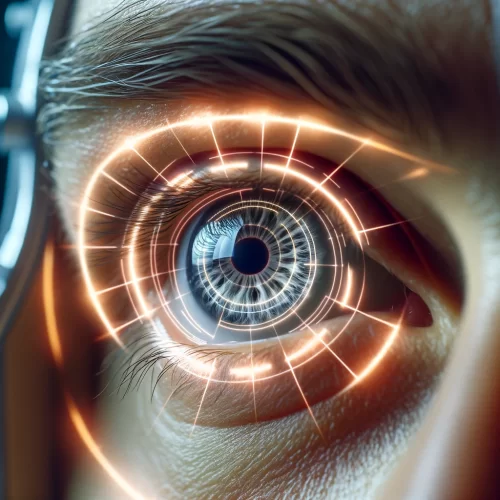
In this article, we will introduce you to an interesting method – EMDR, that can be safely applied to a variety of conditions, as well as to certain anxiety states and experienced psychological traumas. Its effect has been proven over time and despite its complicated name, it is actually easy to do in most situations.
It is called the Eye Movement Desensitization and Reprocessing (EMDR for short) method. It is a mental health treatment technique. It involves moving the eyes in one particular way while the practitioner processes traumatic memories. The goal of EMDR is to aid in healing from trauma or other distressing life experiences.
Compared to some other therapeutic approaches, EMDR is relatively new. Its first clinical trial was conducted in 1989. Since then, dozens of clinical trials in the development of EMDR have shown that this technique is effective and can help a person recover mentally faster than many other methods.

EMDR helps people with a wide range of mental illnesses. It is highly effective and adolescents, teenagers and generally people of all ages can benefit from it.
Why EMDR?
Unlike most schools of psychotherapy, EMDR therapy does not require detailed and long-term discussion of an anxiety problem. Instead, it focuses on changing the emotions, thoughts, or behaviors that result from the anxiety experience or particular trauma. In turn, this allows the brain to begin the natural healing process. This is the place for a parenthetical clarification – although many people use the words “mind” and “brain” as synonyms, they are actually different concepts. The brain is an organ of the body and the mind is the collection of thoughts, memories, beliefs and experiences that make us who we are.
The way our mind works depends a lot on the structure of the brain. It involves networks of communicating brain cells in many different areas. This is especially true of the neuronal areas that process memories and senses, as they are networked together through which they can work together more quickly and easily. This is why our senses – sights, sounds, smells, tastes and sensations – are able to bring back strong memories of the past.
EMDR relies on the adaptive information processing model, and this is a theory about the way the brain stores memories. It was developed by Dr. Francine Shapiro, who invented EMDR. According to her, the brain stores traumatic memories in a slightly different way than normal ones.
 During normal events, our brain stores memories smoothly and also networks them so they connect to other things we remember. When disturbing or upsetting events happen in our lives, the functions in this network are not performed properly. The brain can go “offline” and there is a disconnect between what we experience (sensations, feelings, visual information) and what our brain stores in memory through language.
During normal events, our brain stores memories smoothly and also networks them so they connect to other things we remember. When disturbing or upsetting events happen in our lives, the functions in this network are not performed properly. The brain can go “offline” and there is a disconnect between what we experience (sensations, feelings, visual information) and what our brain stores in memory through language.
Often our brain stores memories of trauma in a way that does not allow for healthy healing. Think of trauma as a type of physical wound that the brain has not allowed to heal. Because it hasn’t had a chance to heal, the brain hasn’t gotten the message that the danger has passed. Newer experiences can connect to earlier traumas and reinforce the negative experience over and over again.
This happens not only with events we remember, but also with repressed memories. Just like the way we learn not to touch a hot stove because we know we will get burned, our mind tries to repress memories and avoid accessing them because they are painful or upsetting. However, this suppression is not perfect because it means that the “hurt” is still causing negative symptoms, emotions, and behaviors.
At some point, certain sights, sounds, and smells with a connection or similarity to a traumatic event experienced will “trigger” these improperly stored memories, and unlike other memories, these can cause overwhelming feelings of fear, anxiety, anger, or panic.
By undergoing EMDR, the patient accesses memories of trauma in very specific ways. Combined with eye movements and guided instructions, accessing these memories helps to process what he remembers of the negative event. It is this reprocessing that helps to “repair” the mental trauma from that memory. By remembering what happened, the sufferer will no longer want to relive it over and over and the associated feelings will be much more manageable and mild in intensity.
What conditions and problems does EMDR treat?
The most widespread use of EMDR is to treat post-traumatic stress disorder PTSD). This is far from saying that the list of other conditions that the therapy helps with is short. It also includes:
– Anxiety disorders – generalized anxiety disorder, panic disorder, phobias and social anxiety, etc.
– Depressive disorders – major depressive disorder, persistent depressive disorder and depression associated with illness.
– Dissociative disorders – dissociative identity disorder or amnesia and depersonalization disorder or derealization.
– Eating disorders – including anorexia nervosa, bulimia nervosa and binge eating disorder.
– Gender dysphoria – feeling a gender other than the one assigned at birth.
– Obsessive-compulsive disorders – OCD, body dysmorphic disorder.
– Personality disorders – borderline personality disorder, avoidant personality disorder and antisocial personality disorder.
– Trauma disorders – acute stress disorder, post-traumatic stress disorder and adjustment disorder.
The effectiveness of the method is undisputed. Numerous trials and research studies have analyzed EMDR and shown that it works.
What is done during EMDR therapy?
 To begin with, it consists of eight phases. These phases happen in a series of sessions, with one session sometimes using parts of several phases. An example of this would be how phases 1 and 2 usually only happen in the early sessions, while phases 3 through 8 are part of multiple sessions later on. A disturbing event or memory usually takes between three and six sessions, but some more complex or longer-lasting traumas may take 8 to 12 sessions (or sometimes longer). Sessions usually last between 1 hour and 90 minutes. The eight phases are:
To begin with, it consists of eight phases. These phases happen in a series of sessions, with one session sometimes using parts of several phases. An example of this would be how phases 1 and 2 usually only happen in the early sessions, while phases 3 through 8 are part of multiple sessions later on. A disturbing event or memory usually takes between three and six sessions, but some more complex or longer-lasting traumas may take 8 to 12 sessions (or sometimes longer). Sessions usually last between 1 hour and 90 minutes. The eight phases are:
- Patient history and information gathering. This part of the process helps therapists determine if EMDR is likely to help in a particular case. Questions are asked about upsetting or disturbing events and memories from the past.
- Preparation and Training. Here the therapist will talk with the patient about what happens during EMDR sessions and what can be expected. Things to focus on to help him or her feel more stable and secure during the sessions will also be discussed.
- Assessment. This part of the process is when themes and specific memories will be identified to work on during the revision. These assist in identifying both the negative beliefs about how the trauma has made the individual feel, as well as the positive beliefs the individual would like to believe about themselves in the future.
- Desensitization and Reprocessing. During this phase, the therapist helps to activate memory and identify one or more specific negative images, thoughts, feelings, and bodily sensations. During reprocessing, this helps the patient notice how they are feeling and become aware of any new thoughts or insights they have about what they are experiencing.
- Installation. Here patients should focus on the positive belief they want to build while processing a memory. This positive belief could be what was said in Phase 3 or something new that they thought about during Phase 4.
- Body Scan. The therapist will ask the client to focus on how they feel in their body, especially any of the symptoms they feel when they think about or experience the negative memory. This phase helps to identify progress through EMDR therapy as a whole. As one moves through the sessions, symptoms should decrease until they disappear completely (or get as close to none as possible). Once the symptoms are gone, the re-treatment is considered complete.
- Closure and stabilization. The purpose of this phase is to form a bridge between subsequent sessions. During it, what should be expected between sessions is discussed. This includes stabilizing emotions, especially if there are negative thoughts or feelings in the time between sessions.
- Reassessment and continuing care. This last phase of EMDR therapy involves reviewing the patient’s progress and how they are doing at the present time. This helps determine if there is a need for additional sessions or how to adjust goals and expectations for therapy. The patient will also be helped to explore what they may experience in the future – how they would like to handle things at this time, knowing what they know now about themselves and their past trauma.
Something extremely important about this non-traditional therapy is the sensory activation during Phase 4. In the early years of EMDR, stimulation of one sense was applied to both sides of the body, usually this was vision. Therapists then raised a hand with two fingers extended forward and had the patient follow their fingertips from side to side with just their eyes.
Newer EMDR methods also involve vision, but use more advanced means of stimulation, such as with specialized light devices. These have a moving light that must be tracked with the eyes (instead of the therapist’s hand). Other devices use sound, with speakers on either side of the client playing tones.
Read More Articles in Our Blog Here
Sometimes the sense of touch can also be stimulated (if this is appropriate, of course) by tapping on patients’ hands or thighs to activate their sense of touch on both sides of the body.
What are the advantages and disadvantages of EMDR?
EMDR has several advantages. It works, and it works quickly – it has been observed to tend to work in a shorter period of time than other forms of therapy. Patients receiving EMDR usually begin to see results much sooner than with other approaches.
But EMDR also has some disadvantages compared to other forms of therapy. For example, it only works well for conditions related to traumatic experiences. It has no proven effect on mental illness due to hereditary disease, injury, or other physical impact on the brain.
In these cases,EMDR is unlikely to help. Also, it is a new method (since 1989) while other forms of therapy have been used for much longer, therefore more research is needed before experts know if EMDR is a long-term solution to the problem or if patients will need additional therapy years or decades later.
The good thing, though, is that the therapy does not pose many health risks to patients. These are usually negative feelings or thoughts between sessions, as well as a temporary worsening of symptomatology early in therapy.
Article by Alexander Manchev – Medical Student in Medical University – Stara Zagora, Bulgaria